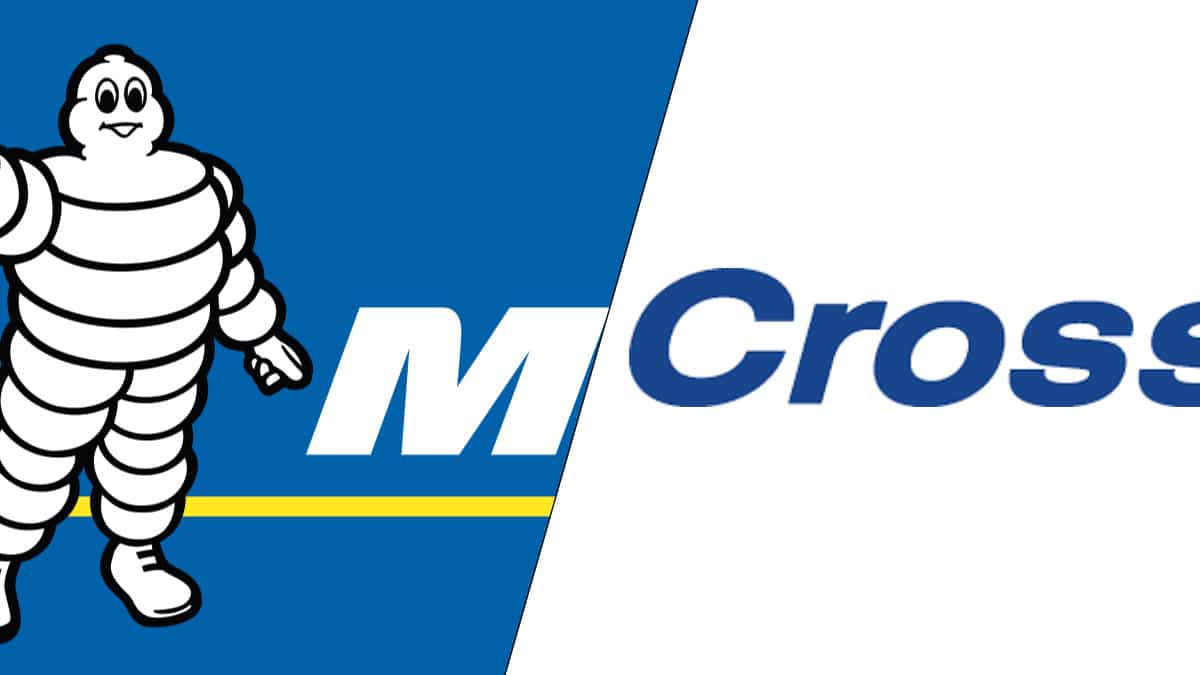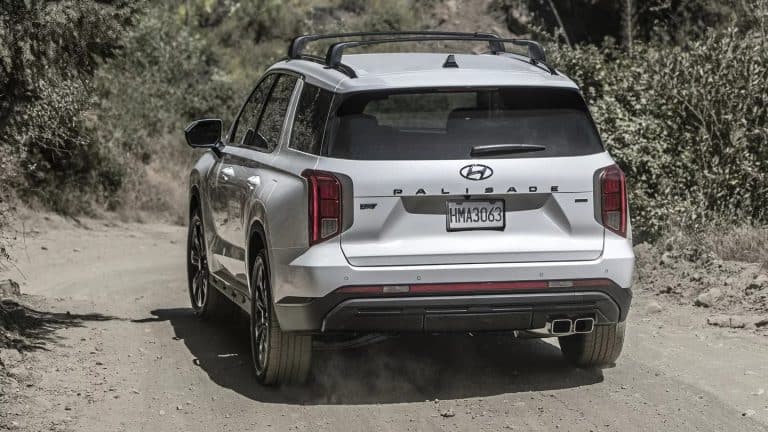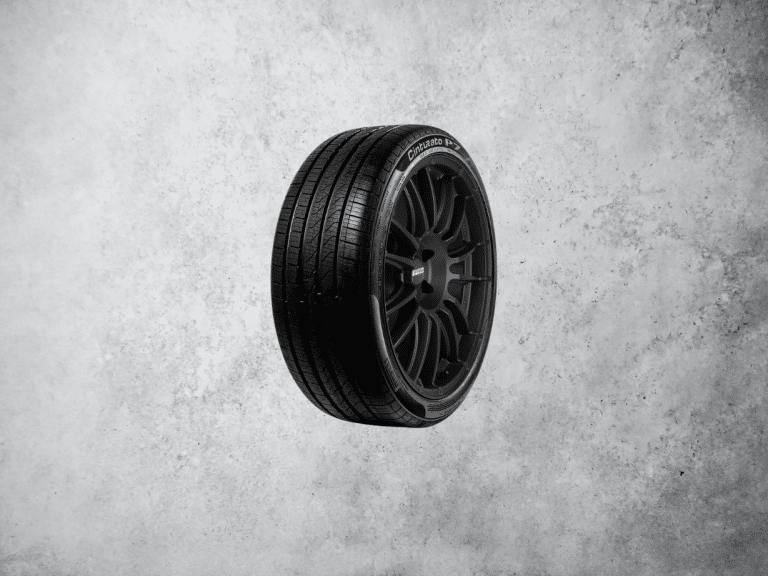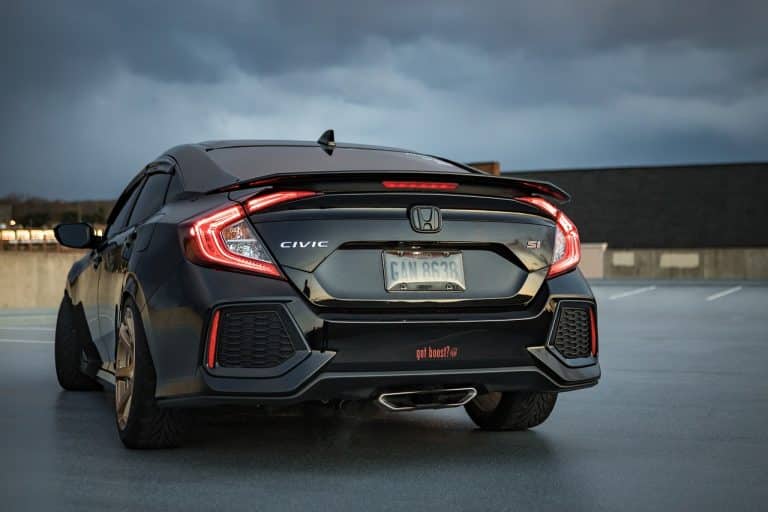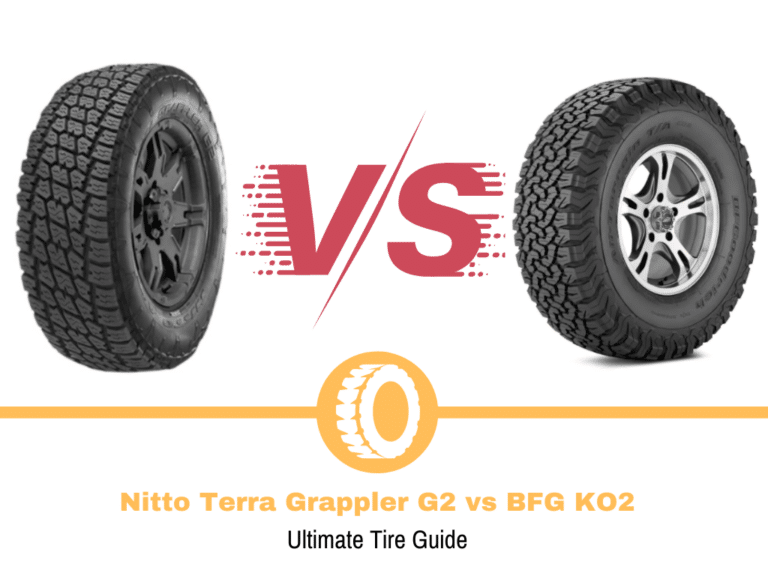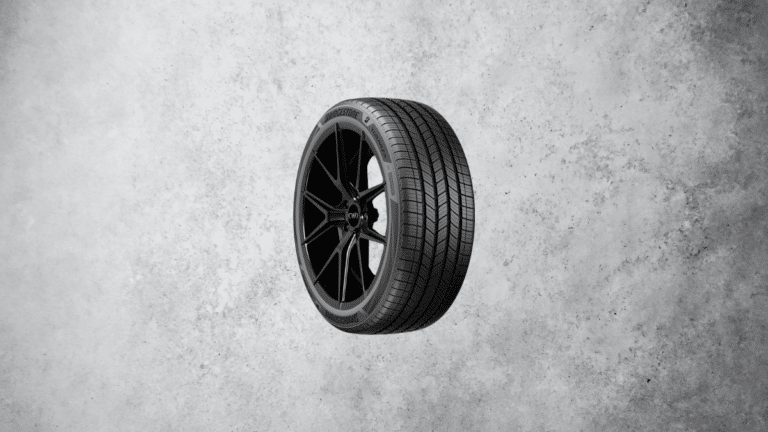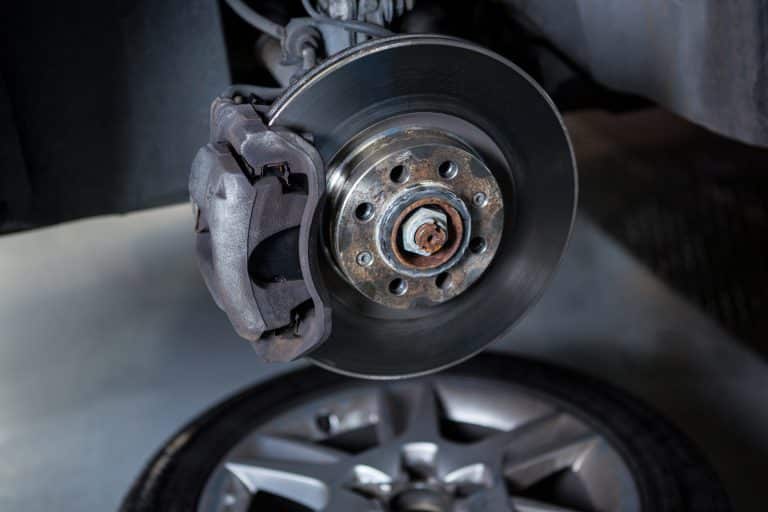CrossWind vs Michelin Tires
When it comes to car maintenance, many areas are crucial, but the tires are among the most crucial ones. Their task is to provide a safe and usable performance, so it’s essential to choose a good set to get the most out of your car.
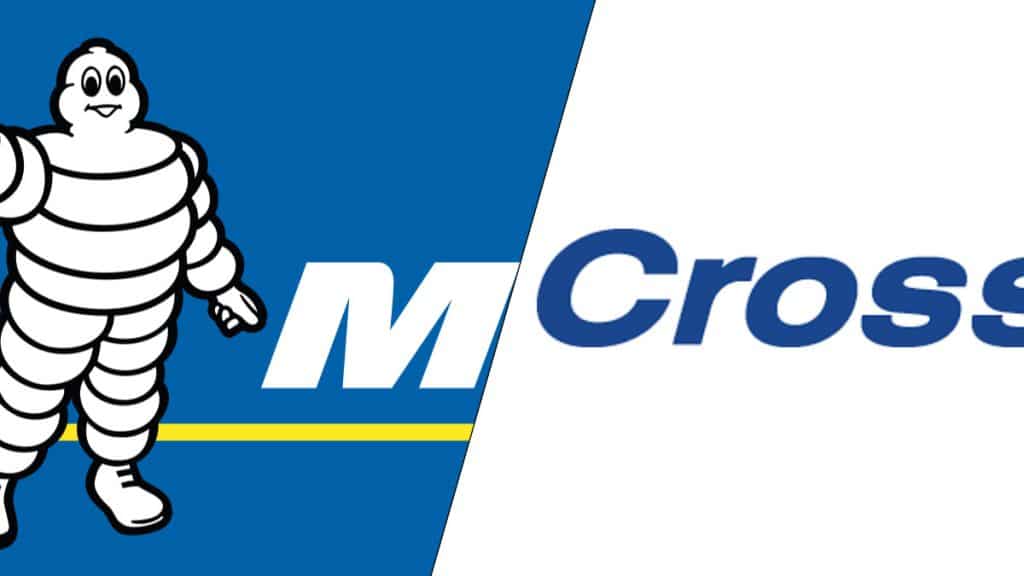
Crosswind Rating: 4.5/5
Michelin Rating: 4.7/5
We compare tires on this website to see if one is better. We also like to see how the manufacturers stack up against one another.
Comparing brands from the same “class” is pretty easy. The models they offer are mostly in a similar price range, so you’re left a performance comparison. When comparing manufacturers from different tiers, a price also plays a role.
Cheaper tires don’t perform as well as the premium ones. The performance difference and the cost of a tire are the main things to keep in mind.
Today, we have two brands from different sides of the spectrum. On one hand, we have CrossWind, a brand that promises excellent performance at an affordable price. On the other hand, we have an established premium manufacturer, Michelin.
Is there a situation where CrossWind can win over Michelin?
CrossWind’s history
The tire industry has loads of tire manufacturers that have been around for a long time, but CrossWind isn’t one of those. It was founded in 2013 as a sub-brand of Shandong LingLong Tire Company. The “mother” company exists since 1975 and is based in Zhaoyuan City. So, we’re looking at a Chinese tire manufacturer. With that said, since it’s not on my list of the worst tire brands, let’s give it a chance and see how it does.
Unlike many of the manufacturers you’ll find on this site, CrossWind isn’t one that can brag about its rich history. The company exists for less than a decade, but there are a few things that show a glimpse of hope.
Since LingLong backs CrossWind, it’s also backed by multiple research centers. Most of these are in China, but there’s one in Germany and the other is in the US. Chinese brands are often criticized for not having well enough researched products, so this could be a good sign.
As far as success is concerned, it doesn’t do too badly, at least in its homeland. The company is in the top 3 manufacturers in China, having 60 national standards and well over 300 patents. Bonus points for its tires passing the US safety requirements.
Things are not looking bad so far.
CrossWind’s tire families
If you’ve read any of my previous comparisons, you know I cover tire families, but in this case, I’ll make an exception. Considering the CrossWind isn’t around for too long, there aren’t families. Instead, the company still has individual tires, so I’ll explain those.
All-Season UHP
I’m a fan of performance-oriented tires, so I’m starting with that one. CrossWind didn’t introduce some fancy naming scheme, so you can guess what kind of tire we have here.
The All-Season UHP model is one that’s designed for high grip and traction levels throughout the year. It’s also designed to offer dynamic handling capabilities. In terms of fitment, the sizes cover a wide range of passenger cars and CUVs.
HP010 Plus
Going for a more touring like tire, we have the HP010 Plus. Even though it is advertised as a performance model, there are some benefits in terms of refinement.
The HP010 Plus is an all-season tire, so you can use it in multiple weather conditions. CrossWind designed it to deliver a very good performance in terms of grip and traction. With that said, it’s also designed to provide a decently well refined ride. You can fit the tire on anything from a car to an SUV.
One thing to note here is that there is a regular HP010 model. It covers all the features as the Plus one, but it’s slightly older. In other words, you should expect to see some improvements with the HP010 Plus.
Eco Touring
Another name that won’t confuse anyone is the Eco Touring model. This tire is better for people who want safe performance, but also excellent refinement.
You won’t be cornering the Eco Touring like on a track, so the grip and traction levels will be good enough for most people. Light snow performance is on the table because the tire is all-season. CrossWind advertises it as a touring model, so high comfort and low noise levels are the main selling point.
Like the previous model, the fitment options are excellent. The Eco Touring comes in sizes for small hatchbacks, ranging up to SUVs.
A/S
The A/S model is a bit weird, based on the claims for it. CrossWind advertises it as a UHP all-season tire, which is fine and overlaps with the first tire. The confusing part is that the tire is also advertised as a model with excellent ride comfort. Both don’t mix too well.
With that aside, things are more or less similar with the All-Season UHP. Excellent performance throughout the year, but with the comfort of the Eco Touring. The only difference here is that this model is designed for passenger cars only.
H/T
In the tire industry, H/T usually stands for highway tire, so this model covers a specific type of vehicles. CrossWind offers this tire in sizes for SUVs and light trucks, mostly.
As far as the features are concerned – it’s a touring tire for larger vehicles. The tire offers decent performance, so good levels of grip and traction combined with short braking distances. Included in the package is refinement, meaning that the tire is smooth and quiet.
A/T
The trend of non-creative naming continues, and we have CrossWind’s A/T model. This is a tire that blends two types of tires into one.
Most tires from this category are designed for solid road performance. This is combined with features that allow it to perform in off-road situations.
M/T
In this category of vehicles, the most hard core type of tire you can get is a mud-terrain one. CrossWind’s model in this category is the M/T.
The tire is primarily designed for off-road use, meaning that it can handle anything from gravel to rock crawling. Naturally, considering its application, it comes in sizes for SUVs and trucks. There is some road performance as well, but it’s not as good as with dedicated road tires.
LTR HWY (L780)
In many ways, the LTR HWY is a tire that’s very similar to the H/T one, at least in terms of what it offers. As a highway tire, you’re looking at a comfortable and quiet ride from a long-lasting tire. It’s also an all-season model, so you can use it throughout the year.
The major difference between this one and the H/T is the application. CrossWind designed this tire to be used with larger vehicles, in most cases large pickups and vans.
4×4 HP
The last tire on this list is one that’s again similar to another model. With the 4×4 HP, you’re getting a tire that’s designed for CUVs and SUVs. The key features of the tire are to provide a well-refined ride and last a long time.
Even though the applications are slightly different, the rest of the features are similar. The 4×4 HP provides safe and dependable performance without sacrificing refinement and longevity.
Michelin’s History
The tire industry has plenty of manufacturers that are well known and this is one of those. Michelin is a company that was founded by the Michelin brothers in 1889 in Clermont-Ferrand. At that time, cars still weren’t popular, so the primary goal was to make bicycle tires that we easy and quick to replace. The tires that were available then weren’t very practical, as it took long to fix a damaged one.
Even in the early days of its existence, Michelin already positioned itself as an excellent bicycle tire manufacturer. To prove how good the products were, the brothers used their tires for a long distance bicycle race and won.
Once cars became popular and widespread, Michelin began producing models for them. This quickly turned into another success story, which was, in part, thanks to the quality the company offered. Throughout the years, many of the innovations this manufacturer implemented helped it cement its position as one of the best manufacturers in the world.
Racing is something Michelin was interested since the early days, so once it began producing car tires, it started entering motorsports. Among the many we know this brand for are Formula E, Formula 1, WEC, WRC, Le Mans and many more.
With well over a century of experience and success, Michelin is a company that’s known as one of the best tire manufacturers in the industry.
Michelin’s tire families
Being around for as long as it is, Michelin has tons of models, so unlike CrossWind, here we have tire families. The French manufacturer has multiple models available, so let’s look at them.
Pilot
Performance is what Michelin is known for and one of the most popular family of tires the company has is the Pilot. With these tires you get uncompromised performance with the highest possible levels of grip and traction. This usually means that the levels of refinement won’t be on the same level as some of the other options the company offers.
In the summer segment, Michelin covers the passenger segment with the Sport 4 and 4S as the “latest” additions to the lineup. With some retailers, the Sport 3 is still available. SUVs aren’t excluded from sporty driving, so the company has the Sport 4 SUV. On the all-season side of things, there are the All-Season 4 and Sport A/S that come for passenger cars only. Winter driving is covered by the Pilot Alpin models, which are performance-oriented and come in sizes for passenger cars, CUVs and SUVs.
Primacy
On the opposite side of the spectrum, Michelin has the Primacy as a touring lineup of tires. Unlike the previous family, these aren’t designed for the best performance. Instead, you’re getting excellent performance and excellent refinement.
The options in this family are plentiful, covering the summer and all-season segments nicely. Michelin still has the MXV4 and MXM4 on sale and offers the Tour A/S and LTX. These are summer and all-season options, depending on the model. If you’re after a summer-only model, the Primacy 3 and HP are a good choice, but they come in sizes only for passenger cars.
Premier
In many ways, the Premier lineup of tires is like the Primacy one. The performance is excellent and will keep you safe on the road. Refinement is what these tires are known for, so you can expect to get high comfort and low noise levels.
Unlike the previous family, here you have only two models. The A/S covers the passenger car segment, while the LTX is designed for CUVs and SUVs. Regardless of which models you’re looking at, your option here is all-season tires only.
Latitude
Michelin has plenty of models in the previous families for larger vehicles, but there’s a family specifically for those. The Latitude lineup is touring options for CUVs, SUVs and some light trucks. You’ll get pretty good performance and high refinement levels.
Within this family, there are several sub-groups, depending on the type of performance you want. Michelin has the Tour, Sport, X-Ice and Alpin covering all segments nicely. As you can guess from the name, these are a little bit of everything, so owners won’t feel limited by the options.
X-Ice
Throughout the rest of the families, Michelin has plenty of winter tires, but the company also has a dedicated family. X-Ice tires are designed for the best winter performance and come with touring-like properties.
If you’re after studless tires, Michelin has the Xi3 and Xi2 in this lineup that come in a wide range of sizes. As a result, you can use the performance on anything from passenger cars to SUVs. Even though they deliver usable ice performance, there’s also the North model, which is a studdable tire, drastically improving the performance in those conditions.
Defender
Another family of tires that covers the touring segment of the market is the Defender. Even though the end-goal is identical to the rest of the pack, these are tires designed with some slightly different technologies. As a result, you have comfortable and quiet tires that don’t compromise on safety.
Things are simple in this lineup of tires. Michelin has two models, depending on the type of vehicle you’d fit them to. On the smaller side of things, like passenger cars or CUVs, there’s the T+H, while for larger SUVs and light trucks, the model to go for is the LTX M/S.
Energy
Touring tires are generally designed to reduce rolling resistance, but Michelin took things a step further. To reduce it even more, it designed the Energy lineup of tires as touring options, which would be a good choice for hybrid or EVs.
Michelin has the Saver model that comes in an all-season and summer variant. As an all-season model only, the Energy lineup has the LX4. The weather is nicely covered, but the fitment flexibility isn’t that great. You can fit these models for passenger cars only and some CUVs.
CrossClimate
Among the newer additions to the Michelin’s rich lineup of tires is the CrossClimate family. These are touring options and are considered to be among the best in the industry at the moment. All tires in this lineup come as all-season options for decent performance even in light winter conditions.
The latest model in this lineup is the CrossClimate 2, with the older CrossClimate+ still on offer with some retailers. In terms of fitment, the best thing about these is that they can be fitted to anything from small hatchbacks to SUVs.
LTX
The last family of tires on offer from Michelin is the LXT. In terms of vehicle fitment, this family covers a similar segment as the Latitude, but the driving conditions aren’t the same. While there are touring options, you also have models with off-road capabilities.
As part of the LTX lineup, Michelin has the M/S2, positioned as a touring tire for paved road use only. If you’re a fan of off-roading, you have the A/T2, a tire designed to be an all-terrain one. It blends on and off-road performance, unless you need a tire that does well for the most extreme situations.
Differences between CrossWind and Michelin
When you consider that we’re comparing manufacturers from different “classes” it’s expected to see some differences. With that in mind, how big of a difference are we going to see here?
Performance
You can probably guess where this is going, but I still need to cover it. Michelin is known for making some of the best performing tires on the market, so it’s difficult to beat that. CrossWind claims its tires are excellent performers, but in reality, they are not.
Let’s look at the performance options and compare the All-Season UHP from CrossWind with some of Michelin’s offerings. There is a performance difference, which is to be expected. The problem is that it’s not one that you can ignore.
The All-Season UHP is a solid-ish tire, capable of delivering acceptable levels of performance. I cannot say that it’s excellent because when compared with Michelin’s models, it’s not. Even the older Pilot Sport A/S 3+ performs better. CrossWind’s model can be acceptable for someone that wants to try out a “performance” tire on a very strict budget.
On the touring side of things, the performance difference remains. The Eco Touring is a tire that won’t bring the wow factor, so you should keep your expectations low. To be fair, it’s an acceptable for driving around town and that’s as much as you should expect from it. The stability at higher speeds isn’t too great and neither are the braking distances. Compared to this, even Michelin’s MXM4 and MXV4 are better.
What about off-roading? Well, CrossWind has the A/T which competes against the LTX A/T2 and it’s at a disadvantage. Even though I wouldn’t classify the LTX A/T2 as the best all-terrain tire, I can classify the A/T as a not so good one.
The A/T is decent on longer journeys, as it’s stable enough. With that said, the grip and traction levels aren’t excellent. I would mark them as safe, but they’re nowhere near what the LTX models from Michelin can offer. In off-roading conditions, it’s not too bad on gravel if you’re aware of the tire’s limitations. Driving in mud or sand is disappointing, but can get the job done in lighter conditions.
To be honest, the performance of CrossWind’s tires is a bit disappointing. Sure, I wasn’t expecting miracles, but I was expecting a bit more. With that said, the tires can be safe, as long as you’re aware of their capabilities.
Available Options
If you went through the list of families I outlined, you already know who the winner is in terms of options, so this is going to be a short section.
Michelin has more families of tires than CrossWind has models overall, so the crown goes to the French manufacturer. There are plenty of overlaps in the premium manufacturer’s lineup, which additionally adds to the flexibility.
I would hate to give the worst marks to CrossWind, so let’s look at things objectively. The company has been around for about a decade, so we shouldn’t expect it to have countless models in its lineup.
Another slight advantage it has is the mud-terrain model. Even though it’s only one, it’s one model more than what Michelin has.
On the other hand, CrossWind doesn’t have any dedicated winter models, while Michelin has multiple in several families.
Price
Looking at the price, CrossWind is a clear winner. This is because Michelin’s tires are premium models, so the price isn’t the most affordable one.
Let’s compare a 17-inch model from the All-Season UHP and Pilot Sport All-Season 4. The difference in price is around $50, which is plenty. With that said, there is a discount for CrossWind’s model, putting the price below the $100 mark. In other words, you can get two All-Season UHP for the price of one of Michelin’s all-season performance tires.
It’s a similar story in the touring department. If we compare the Eco Touring with the Energy Saver A/S from the 16-inch size, we have a noticeable difference. CrossWind’s model is around $35 cheaper than Michelin’s one.
Things don’t change too much when we compare SUV and light truck tires. The CrossWind H/T is around $50 cheaper than the Primacy LTX or the Defender LTX M/S.
In the all-terrain department, we see the biggest difference yet. The A/T from CrossWind is over $60 more affordable than the LTX A/T2 for a 17-inch model. With the current discount, it’s the same as with the UHP tires – 2 CrossWind tires cost as much as 1 Michelin.
CrossWind as a brand is positioned as being an affordable one, so in this regard, it has things going in its favor. Michelin is expensive, but it has a proven record of delivering tires with excellent performance for the price.
Warranty
Whenever I talk about tires, I use the warranty as a reference to show how long they should last. Surprisingly, CrossWind isn’t too far off from what Michelin offers.
I just spoke about the price for the all-terrain options, so let’s see the warranty. The A/T comes with a 50,000-mile treadwear warranty, and the LTX A/T2 has 60,000 miles. This is a number very close to the premium one and even better than some mid-range options on the market.
In the UHP segment, things are even closer. Michelin’s Pilot Sport All-Season 4 and Pilot Sport A/S 3+ come with a 45,000-mile treadwear warranty. On the other side, we have CrossWind’s All-Season UHP with 40,000, which isn’t too bad.
A slightly larger difference can be seen in the touring models for CUVs and SUVs. The 4×4 HP comes with a 40,000-mile treadwear warranty. In comparison, Michelin’s Latitude Tour has a 65,000-mile warranty, and that’s a considerable difference.
Overall, CrossWind does pretty good in terms of warranty. With most of the models, it’s very close to Michelin, so it deserves a high praise. You should keep in mind that the warranty is only to give you an idea. I haven’t had the chance to test any of CrossWind’s models to determine if they can last as long as the company claims.
Advantages of CrossWind
- Safe enough
- Very affordable
- Warranty isn’t too far behind Michelin
Advantages of Michelin
- Much better performance
- More available models
- Longer warranty
Which brand to choose?
I would love to say that you should choose CrossWind, but I’d have to be lying. Michelin is the better brand here and there’s no denying that. Yes, there are some positive sides to CrossWind, so let’s see what those are.
Price is the first thing that comes to mind, and that is a powerful argument. If you’re on a tight budget and you need a new set of tires, you can Consider CrossWind. With that said, the tires it has aren’t the best performers, so you will need to be careful. Lower grip and traction levels, along with longer braking distances, are aspects you shouldn’t ignore.
The warranty that CrossWind offers also isn’t terrible. To be honest, for the price it’s even pretty good. For most of the models, it’s very close to what Michelin offers. As a side comparison, it’s identical or sometimes better than some of the mid-range options on the market.
As good as all of this sounds, Michelin is a far better option. If you can afford the models this brand has on offer, go for it, you won’t be disappointed. Better performance, longer warranty and much more options to choose from and only a handful of advantages you’re getting with this brand.
